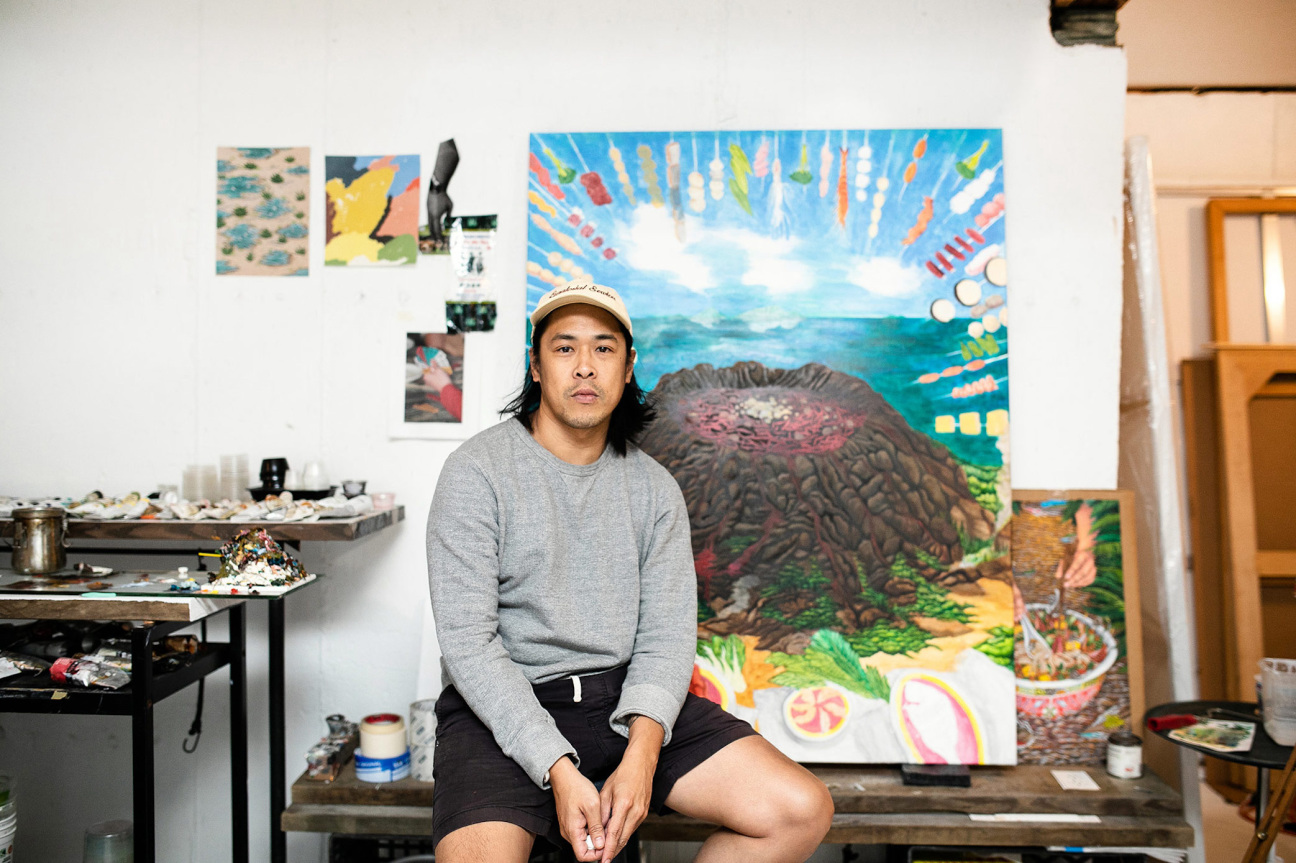
Charles Ly
By Elisha Tawe
Still grappling with the success of his first solo show last year at Harper’s Chelsea 534, the East Hampton-based Vietnamese-American painter Charles Ly tells me he’s “dealing with the imposter syndrome” that comes with new attention. “People liked my work, but it was my first big show.”
Ly’s oeuvre includes slightly surreal figurative paintings that spotlight Vietnamese people, culture, and food. The artist’s charming downplaying of his success aside, Cháo, 2021, and Xe Lua, 2021, which appeared in the Harper’s exhibition, are stirring works laced with a bit of comic relief. We see in them the metaphorical hands of God reaching down from the heavens into bowls of pho and volcanic hot pots surrounded by skewers of vegetables ready to attack.
“The soups serve as metaphors for melting pots, metaphors for our world,” says Ly. He explains that he went to Vietnam for the first time five years ago. “Growing up Vietnamese in rural America, food is the thing you connect to from your heritage,” he says. “Going [to Vietnam] reaffirmed who I was on a cellular level."
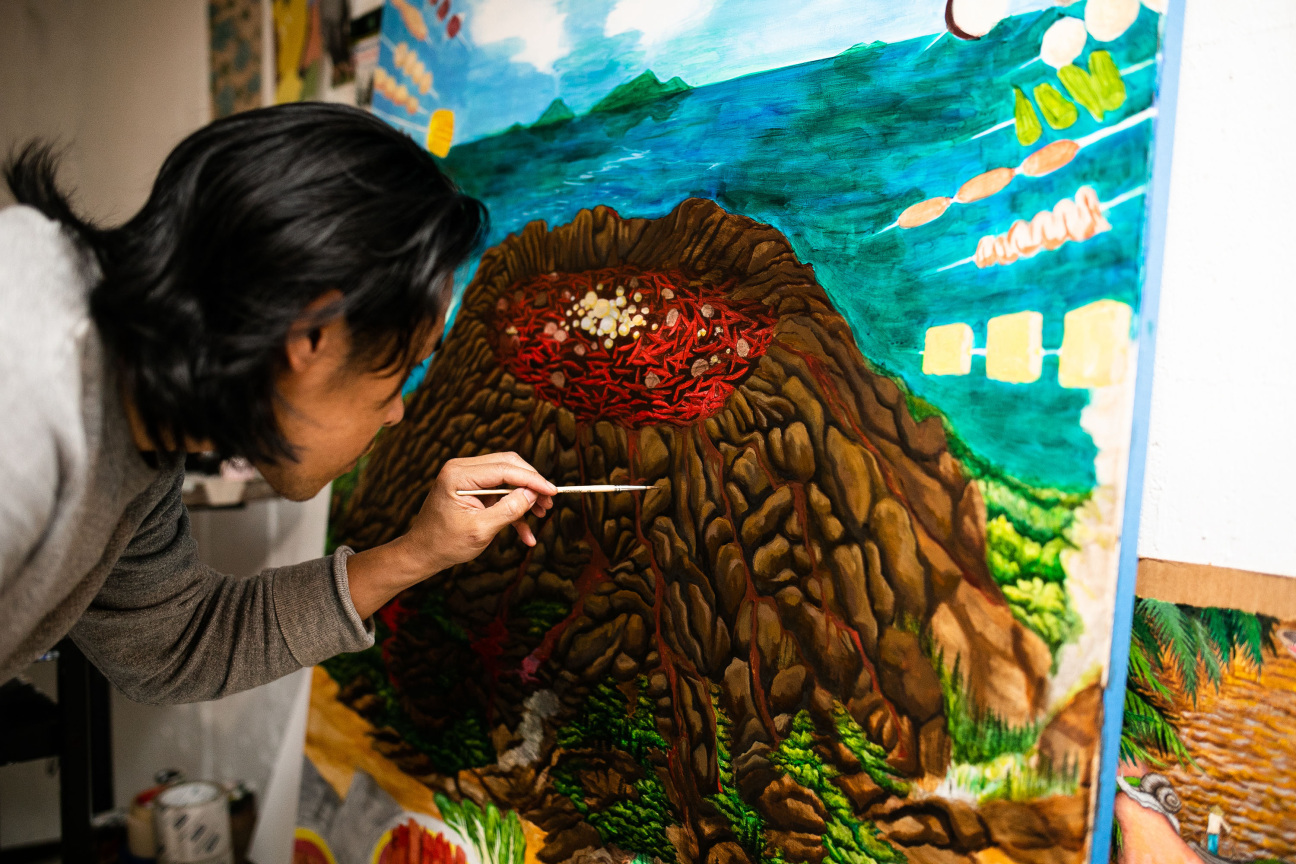
We continue to mull over our shared experiences as members of our respective diasporas, food never far from the focus. “When my mom calls, she starts every conversation with ‘Have you eaten?’" says Ly, laughing. "In our culture, we express our emotions through food.”
The artist, 39, grew up in the art-rich community of East Hampton. “Willem de Kooning, Chuck Close, and Andy Warhol had places here. They still have estates here,” he says. The deep artistic roots of the area provide plenty of inspiration to him now, but even though he was “very much surrounded by art as a kid,” he wasn’t always aware of it. “I was more into comics and video games, watching Teenage Mutant Ninja Turtles and trying to copy them on paper,” he says. “I was always trying to put myself in those worlds."
Ly trained as a graphic designer, but after a few unfulfilling years he says he found the screen time too taxing. Instead he turned to painting and drawing. He is currently preparing a new body of work for his next solo show, set to open in 2024 at Harper’s Los Angeles. When asked how he feels about spending time in his studio this summer, Ly laughs. “The hardest part of being an artist is being inside on a nice day,” he says. “I’m on an island after all—I like to surf whenever there are waves. I try to be in nature as much as possible, so [studio work] is like torture."
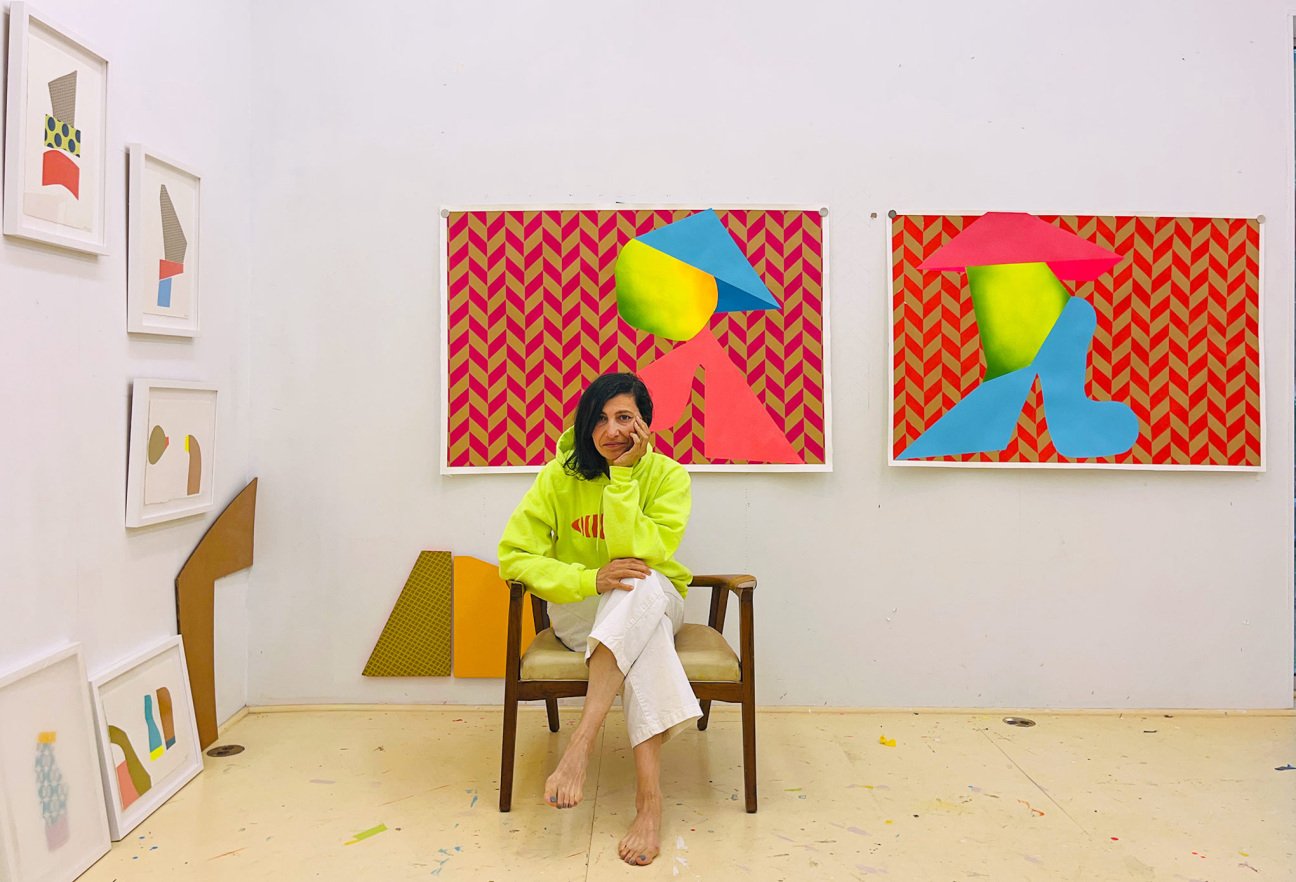
Almond Zigmund
By Matilda Bathurst
For Almond Zigmund, art is inherently social. Working through deeply personal ideas in the privacy of the studio becomes a way of reaching out and seeking to communicate something of our shared humanity.
From paintings to sculpture, and interior murals to large-scale urban interventions, Zigmund’s work renews an awareness of how we relate to our surroundings and to one another. “When relationships are formed, whether in an artistic composition or between human beings, it’s incredibly generative and never predictive,” she says, speaking from her home studio, where she’s surrounded by clay maquettes and vivid, geometric paintings ready to be rearranged. “Those relationships bring about transformations that subvert expectations—a whole universe is brought into being.”
At home in the Hamptons, Zigmund’s attunement to that network of relationships arises from observations of the natural world. However, her artistic language first emerged from the pressure and intensity of urban environments. She grew up in Brooklyn and pursued her undergraduate studies at Parsons School of Design in New York and Paris before receiving her MFA from the University of Nevada, Las Vegas, so Zigmund’s imagination is constantly drawn to architecture and the drama of civic life. “My grandparents were European immigrants who moved to the U.S. during the Second World War,” she explains. “I think my fascination with the built environment has to do with a need for roots—that feeling of being anonymous and slightly unmoored but also engaged in a constant dance.”
"Dance" is the operative word for an artist who finds inspiration in the costumes and set designs of Bauhaus ballet, the “non-places” of supermodernity, and the intimate physicality of artworks that can be inhabited, from the clothing designs of Rudi Gernreich to the ecstatically tactile assemblages of Miriam Schapiro. In the Hamptons, that dance finds a new pace. “I have great peers here—artists whose work I love and whom I look to when I need inspiration, friends I can easily call into my studio whenever I need advice or direction.”
Zigmund’s site-specific work sets the tone for the types of creative relationships that define the Hamptons art scene. You’ll find her bold decals adorning the walls at Onna House, and her mural in the Parrish Art Museum café is a playful evocation of collective living. After having recently completed a major public commission for the U.S. Embassy in Asunción, Paraguay, she is now enjoying a return to smaller-scale works and experimenting with new materials for private commissions. “I’m always thinking about how these works might translate between different realms, scales, and media. Nothing is fixed in one form; nothing is static. Art allows us to find joy in that fact, to feel that possibility.”
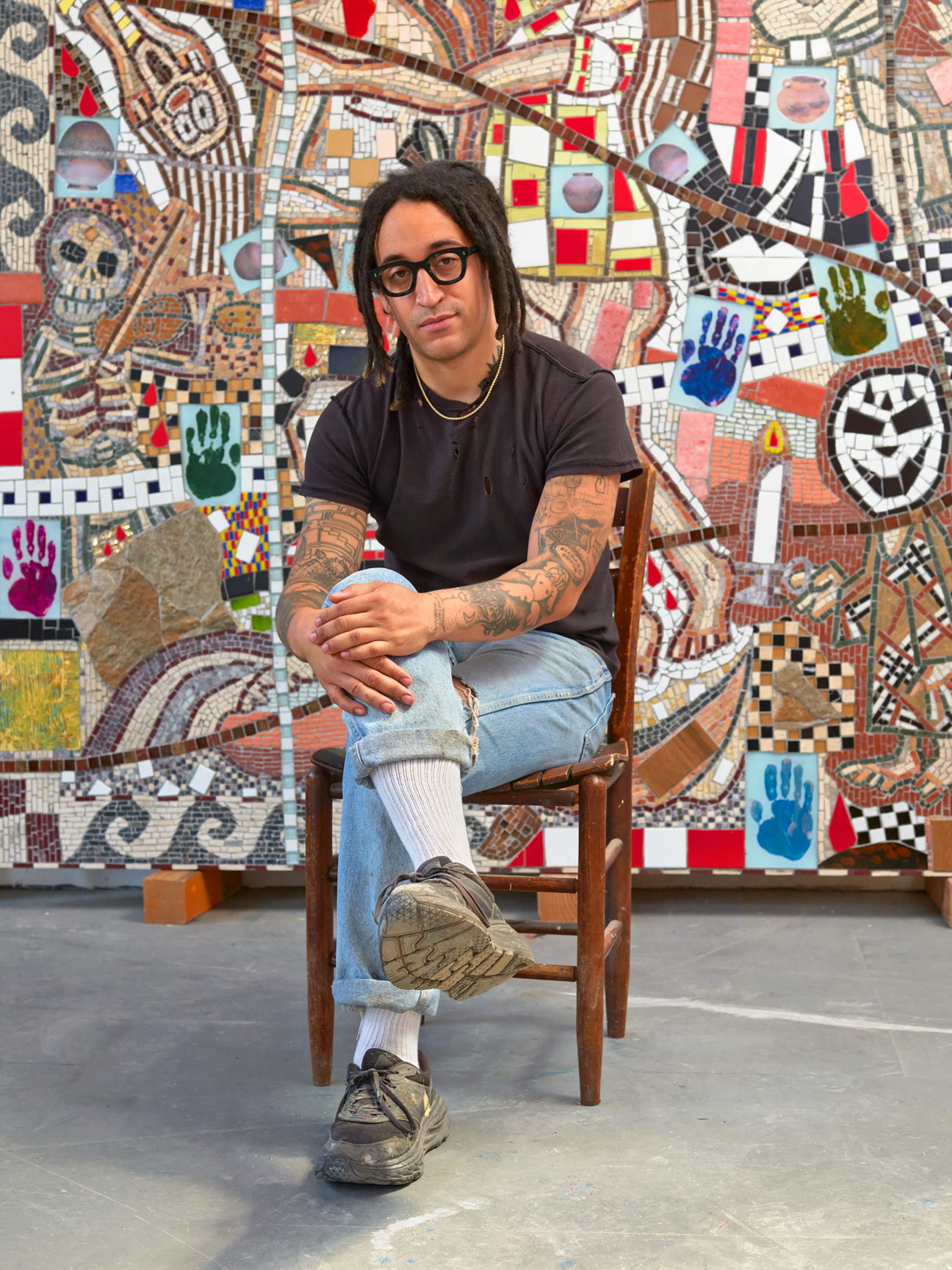
Cameron Welch
By Amaya McDonald
Cameron Welch remembers the first time he saw a painting by a person of color. Born in Indianapolis, Welch made many trips to the city's Museum of Art (now Newfields) as a child, but it wasn’t until his teenage years that he saw a newly acquired work there titled Don’t Matter How Raggly the Flag, It Still Got to Tie Us Together by the Black self-taught assemblage artist Thornton Dial. It was only then, Welch says, that “I had seen myself in an artwork, in any sense of the phrase.”
Dial’s formative influence on Welch remains evident. Based in Brooklyn, Welch, 32, is recognized for his assemblages that marry mythology with the mundane by incorporating found objects like mirrors, CDs, and MIDI keyboards. Throughout his training—first at the School of the Art Institute of Chicago, where he received a BFA in 2013, and later at New York’s Columbia University, where he earned an MFA in 2016—Welch foregrounded underrepresented Black histories and experiences in his paintings by using commonly found objects.
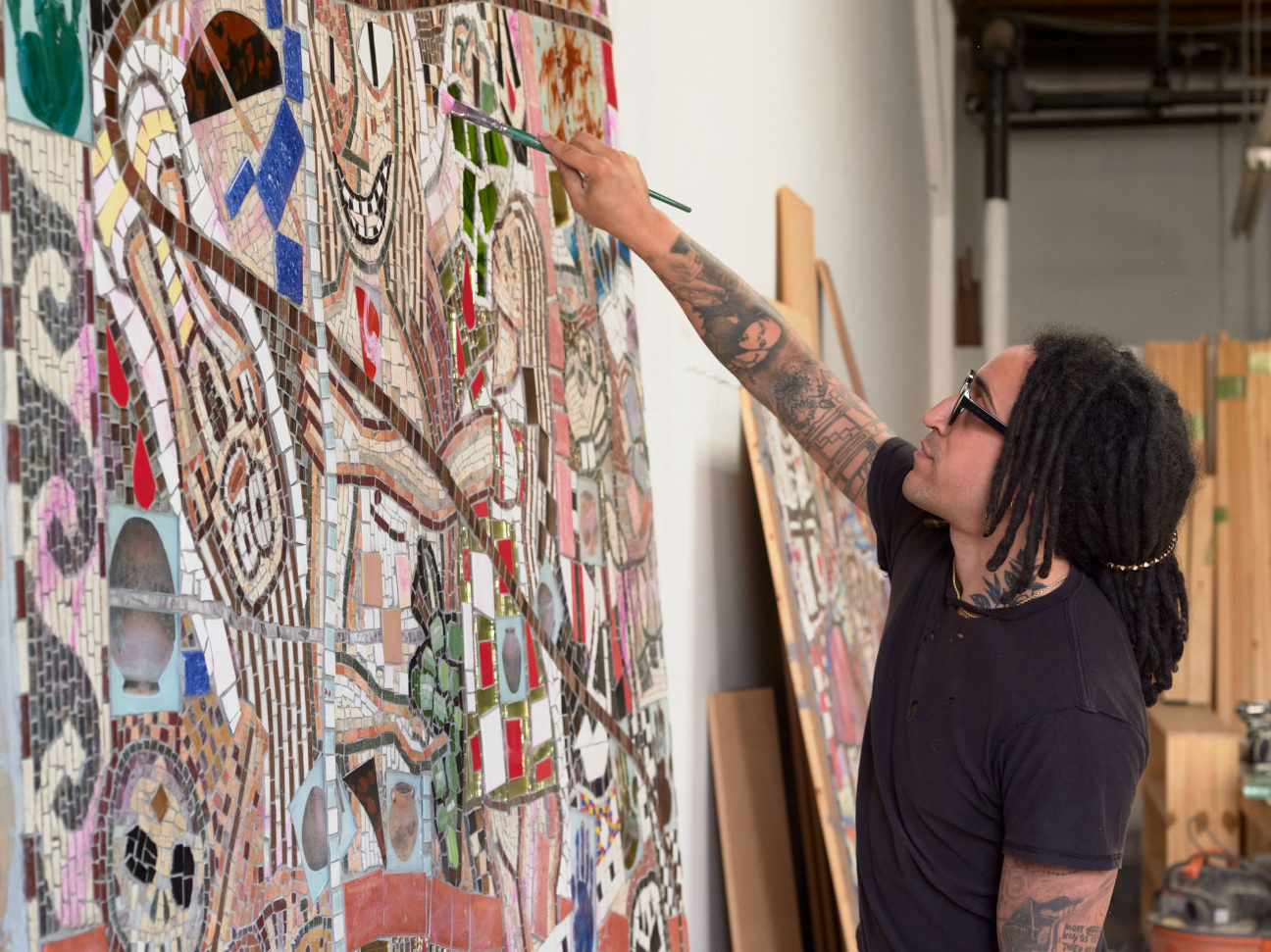
His 2018 solo show, “Retrograde” at Rental Gallery in East Hampton, proved pivotal in his practice. Through 10 large-scale mixed-media paintings, Welch reimagined well-known characters from Western folklore and classical literature as people of color. His use of mosaic, a medium often associated with the Roman Empire, is intentionally referential. “[I thought] it would be a really great way to pose new mythologies or new narratives around Blackness,” he says. The exhibition presented him with an opportunity to investigate racial identity through the lens of mythmaking on a large scale, and “having that dialogue take place in what is a predominantly white space provided a really generative conversation around the work."
Welch continues to create pieces he calls new myths—untold stories of the present that may one day inform the future. Much of his recent work doubles down on his dialogue with the past by incorporating marble. Nonetheless, an optimism for the future shines through the hard stone, showing how people of color “should and could be depicted in a historical sense.”










 in your life?
in your life?

